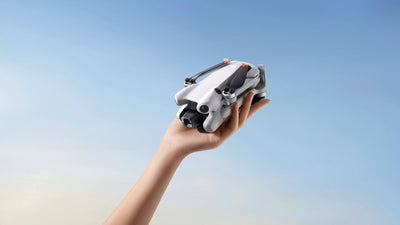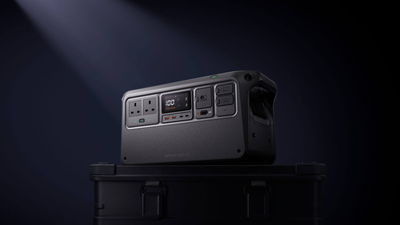DJI Matrice 400 vs DJI Matrice 350 RTK
- by Stefan Gandhi
DJI has once again raised the stakes in commercial drone technology with the introduction of the DJI Matrice 400. As the direct successor to the proven Matrice 350 RTK, this latest release is more than just an incremental upgrade. It represents a complete rethinking of what a commercial drone platform can offer, bringing enhanced endurance, intelligent automation and rugged reliability to the forefront of professional drone operations.
For enterprise users operating in critical sectors like infrastructure inspection, public safety, agriculture and surveying, the Matrice 400 delivers the tools to not only meet increasing operational demands but also exceed them.
Flight Time: More Airtime, More Productivity
The Matrice 400 offers a maximum flight time of up to 59 minutes, extending missions by a crucial four minutes over the Matrice 350 RTK. In high-value operations, every additional minute in the air translates to more data gathered, fewer battery swaps and tighter mission timelines. For industries where time-sensitive data capture is key, this bump in endurance can mean the difference between adequate and optimal results.
Payload Capacity: Doubling Down on Versatility
Perhaps the most impactful upgrade is the Matrice 400's payload capacity. With support for up to 6 kg, it more than doubles the 2.7 kg limit of the Matrice 350 RTK. This expansion unlocks new configurations with heavier and more sophisticated sensors, including multi-payload setups for simultaneous data streams. Whether deploying LiDAR scanners, thermal cameras or advanced multispectral sensors, operators now have far more flexibility in designing mission-specific payloads.
Obstacle Sensing: Power-Line-Grade Precision
While the Matrice 350 RTK offered dependable obstacle sensing for general navigation, the Matrice 400 pushes safety and precision to the next level. With integrated rotating LiDAR and millimetre-wave radar, it delivers obstacle avoidance suitable for power-line inspections and other high-risk environments. The system detects minute obstacles at longer distances and in low-visibility conditions, ensuring safer navigation through complex terrains and structures.
Communication: Rock-Solid Link in Every Condition
The Matrice 400 is equipped with DJI's new O4 Enterprise Enhanced Transmission System, incorporating dual cellular dongle support. This enhancement ensures stronger signal reliability, reduced latency, and increased range, particularly in obstructed or remote areas. Compared to the O3 Enterprise system in the Matrice 350 RTK, the O4 platform supports smoother real-time video and data transmission, which is vital for command-and-control stability during critical missions.
Automation and AR: Smarter Flight Planning, Safer Missions
Intelligent automation is where the Matrice 400 truly distances itself. Features like Power Line Follow, Slope Route and Geometric Route simplify the execution of complex mission profiles. These tools minimise manual input, reduce pilot workload and increase consistency across repeat operations. Add in advanced AR projection capabilities for routes and maps, and you have a drone that enhances both pre-flight planning and real-time situational awareness. The Matrice 350 RTK, while competent, offers only basic automation features and lacks AR support entirely.
Use Case Impact: Efficiency Across Every Sector
For public safety teams, the Matrice 400 offers faster deployment, enhanced obstacle sensing and real-time AR visuals, enabling more effective response during emergencies.
In infrastructure inspection, the ability to fly longer with heavier, high-resolution sensors significantly cuts down on time and cost per inspection while improving data quality.
Agricultural users benefit from precision-guided flight routes and larger payloads that support sophisticated crop health monitoring tools, making large-scale operations more efficient.
For the AEC (architecture, engineering, and construction) sector, improved automation, imaging accuracy and real-time mapping enable faster, more accurate surveys and site monitoring.
Comparison Overview: Matrice 400 vs Matrice 350 RTK
| Feature | DJI Matrice 400 | DJI Matrice 350 RTK |
|---|---|---|
| Maximum Flight Time | 59 minutes | 55 minutes |
| Payload Capacity | 6 kg | 2.7 kg |
| Obstacle Sensing | Rotating LiDAR & mmWave Radar | Standard sensors |
| Transmission System | O4 Enterprise (dual cellular) | O3 Enterprise |
| Automation Capabilities | Extensive (Power Line Follow, AR projection) | Basic automation |
| AR Capabilities | AR projection of maps and routes | Not available |
| Operating Temperature | -20°C to 50°C | -20°C to 50°C |
Conclusion
The DJI Matrice 400 doesn't just replace the Matrice 350 RTK. It elevates every core metric that matters to commercial drone users: flight endurance, payload flexibility, environmental awareness, automation and communications. For operations where precision, safety and efficiency are non-negotiable, the Matrice 400 is not just the next step. It's the new standard.
Upgrade your aerial capabilities. Purchase the DJI Matrice 400 on the Coptrz online store and transform your drone operations today.




